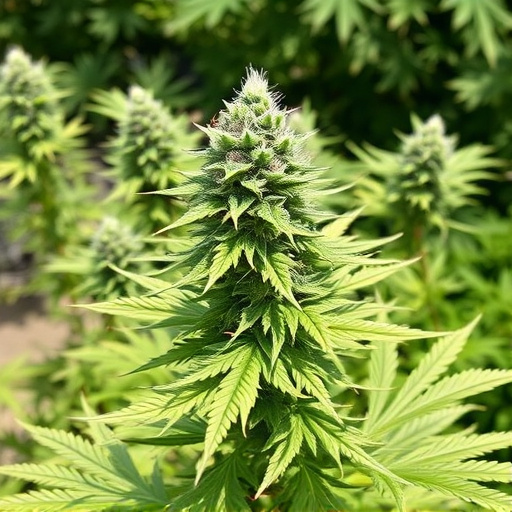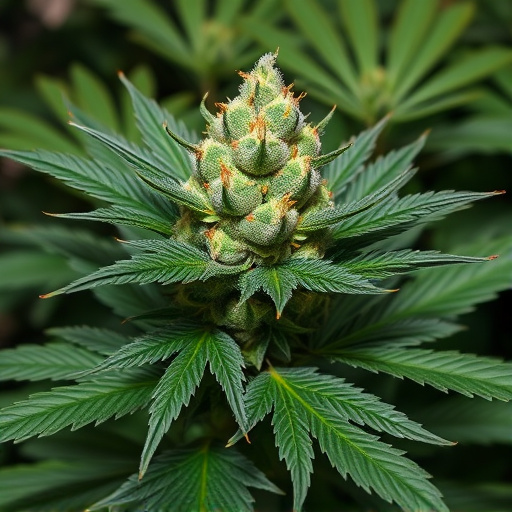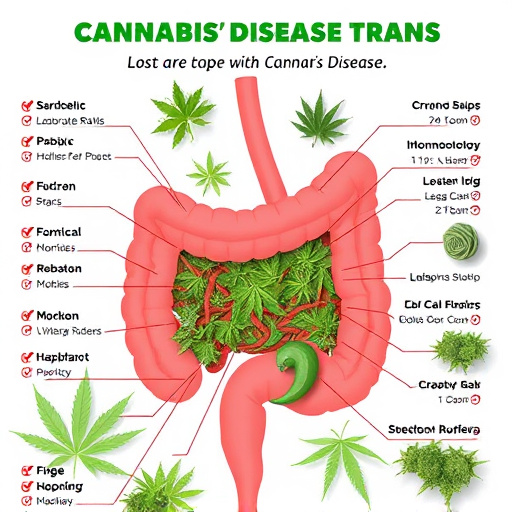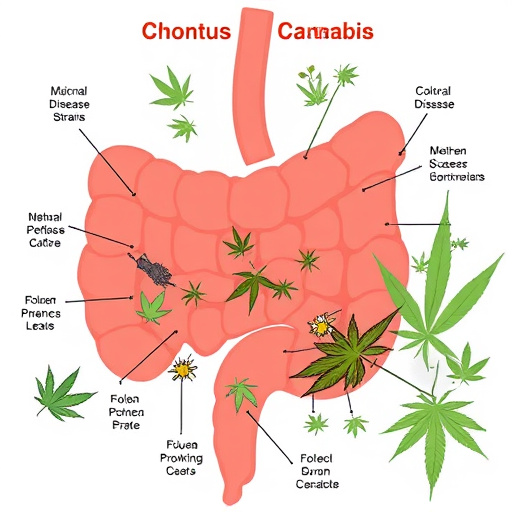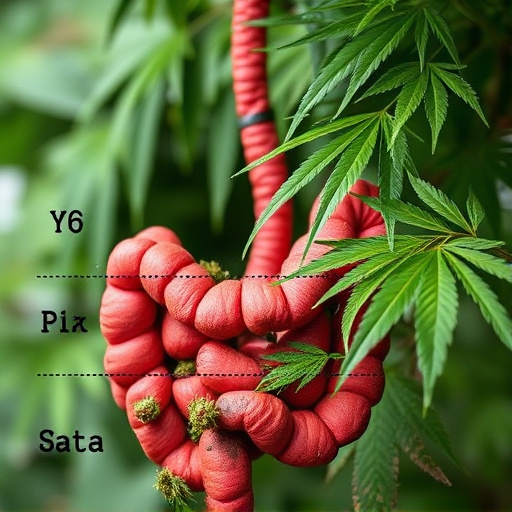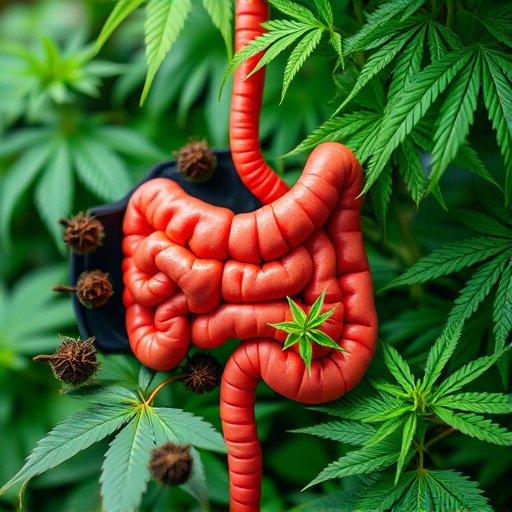Cannabis, with its active compounds THC and CBD, offers potential therapy for Crohn's Disease (CD) patients through interaction with the endocannabinoid system. Studies show it can manage CD symptoms like pain, inflammation, and nausea. Choosing the right strain involves considering individual needs, specific terpenes (e.g., myrcene, linalool), consumption methods (smoking, vaping, edibles, topicals), and desired effects (relaxation vs. energy). Beginners should start with low THC doses, prioritize quality products, and monitor responses. For CD patients, targeting specific strains designed for their condition enhances therapeutic benefits while minimizing risks.
Cannabis has gained attention as a potential treatment for various conditions, including Crohn’s Disease. This natural compound offers hope for symptom management through its anti-inflammatory properties. However, determining the right amount to consume is crucial, especially for those considering using cannabis to alleviate Crohn’s symptoms. This article explores the factors to consider when choosing the right cannabis strains and provides dosage guidelines to ensure safety and effectiveness.
- Understanding Cannabis and Its Effects on Crohn's Disease
- Factors to Consider When Choosing a Cannabis Strain
- Dosage Guidelines and Safety Precautions for Consumption
Understanding Cannabis and Its Effects on Crohn's Disease

Cannabis has gained attention for its potential therapeutic effects on various medical conditions, including Crohn’s Disease (CD). CD is a chronic inflammatory bowel disease characterized by periods of flare-ups and remission. Several studies suggest that cannabis may help manage symptoms associated with CD, such as pain, inflammation, and nausea. The active compounds in cannabis, primarily tetrahydrocannabinol (THC) and cannabidiol (CBD), interact with the body’s endocannabinoid system, which plays a role in regulating immune responses and maintaining intestinal homeostasis.
When it comes to choosing cannabis strains for CD patients, selecting varieties with higher CBD content or specific terpenes may be beneficial. CBD is known for its anti-inflammatory and analgesic properties, potentially reducing pain and discomfort associated with the disease. Terpenes like myrcene and linalool have also shown anti-inflammatory effects and can contribute to a calming experience. It’s essential to consult healthcare professionals who specialize in cannabis medicine to determine the appropriate dosage and strain selection based on individual needs and preferences, ensuring a safe and effective treatment approach for Crohn’s Disease.
Factors to Consider When Choosing a Cannabis Strain

When choosing a cannabis strain, several factors come into play, especially for medical users like those with Crohn’s disease. First and foremost, understanding your specific needs and symptoms is crucial. Cannabis strains vary greatly in their chemical composition, particularly in concentrations of THC (tetrahydrocannabinol) and CBD (cannabidiol). For Crohn’s patients looking to alleviate pain, inflammation, or anxiety, a strain rich in CBD with lower THC levels might be more suitable. This balance can help reduce potential psychoactive effects while providing therapeutic benefits.
Additionally, considering the method of consumption is essential. Different strains may be better suited for smoking, vaping, edibles, or topical applications. For instance, some patients prefer indica strains for their relaxing and sedative properties when smoked or vaped, offering relief from chronic pain and insomnia associated with Crohn’s disease. Others might opt for sativa-dominant strains known for boosting energy and mood, which can aid in managing fatigue often experienced during flare-ups.
Dosage Guidelines and Safety Precautions for Consumption

When it comes to determining how much cannabis to consume, especially for medical purposes like managing Crohn’s disease, there are no one-size-fits-all guidelines. Dosage depends on various factors including individual tolerance, desired effects, and specific cannabis strain characteristics. Starting with a low dose is generally recommended, typically around 5-10 milligrams of THC (the primary psychoactive compound) for beginners or those using it for the first time. From there, users can gradually increase their intake to find the optimal amount that provides relief without causing adverse side effects.
Safety precautions are essential when consuming cannabis. It’s crucial to choose high-quality products from reputable sources and start with strains known for their low THC content if you’re new to cannabis or managing health conditions like Crohn’s disease. Monitoring your body’s response is key; pay attention to how you feel and adjust your dosage accordingly. Keep in mind that the effects of cannabis can be more potent than expected, especially when consumed orally. Always consume in a safe environment and never drive or operate heavy machinery after use.
When exploring cannabis as a treatment for Crohn’s Disease, understanding both its potential benefits and risks is paramount. By considering individual tolerances, choosing suitable cannabis strains, and adhering to safe dosage guidelines, you can navigate this alternative approach with confidence. Remember, what works for one person with Crohn’s may not be right for another, so personalized exploration and professional guidance are key. With the right strain and dosage, cannabis could offer relief and improve quality of life for those managing this chronic condition.
